Why Michelangelo’s ‘David’ Is an Icon of the Italian Renaissance
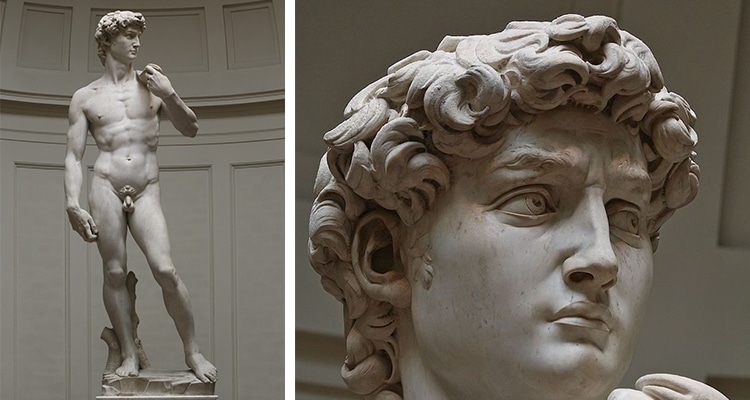 Michelangelo’s defiant David statue has captivated the world for centuries. Considered one of art history’s major masterpieces, the marble sculpture showcases both the artist’s skill and the fine art focus that defines the Renaissance.Since its debut in the early 16th century, artists and art connoisseurs alike have admired the piece. Esteemed artist, writer, and historian Giorgio Vasari noted that “no other artwork is equal to it in any respect, with such just proportion, beauty and excellence did Michelangelo finish it.” To understand why the sculpture has garnered such praise, one must first understand the context in which it was created.
Michelangelo’s defiant David statue has captivated the world for centuries. Considered one of art history’s major masterpieces, the marble sculpture showcases both the artist’s skill and the fine art focus that defines the Renaissance.Since its debut in the early 16th century, artists and art connoisseurs alike have admired the piece. Esteemed artist, writer, and historian Giorgio Vasari noted that “no other artwork is equal to it in any respect, with such just proportion, beauty and excellence did Michelangelo finish it.” To understand why the sculpture has garnered such praise, one must first understand the context in which it was created.
Who was Michelangelo?
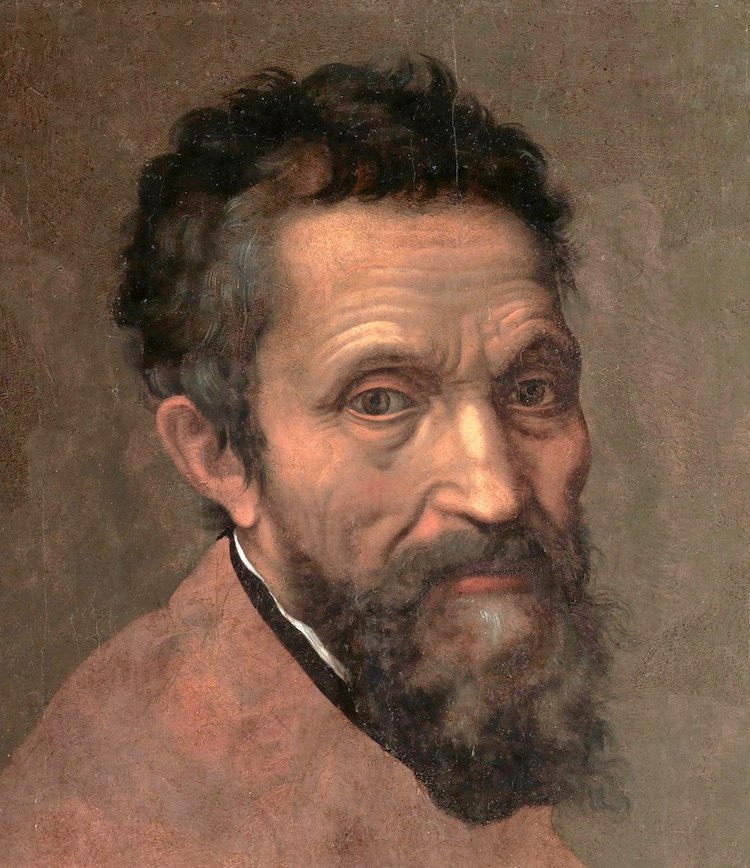
Attributed to Daniele da Volterra, Portrait of Michelangelo Buonarroti, c. 1545 (Photo: Wikimedia Commons, Public domain)
Michelangelo di Lodovico Buonarroti Simoni (1475–1564), better known simply as Michelangelo, was a key artist of the Italian High Renaissance. Born and raised in Tuscany, he displayed an affinity for art at an early age, apprenticing with an array of prominent Florentine artists throughout his teenage years. While he was trained in both painting and sculpture, Michelangelo gravitated more towards the latter. The art historian Giorgio Vasari attributed Michelangelo’s love of the marble to being raised at his father’s marble quarry.
Prior to David, Michelangelo had created two major commissions, both in Rome. The first was a statue of Bacchus (1496–97), originally intended for a high-ranking cardinal, but ultimately rejected and bought by a friend of Michelangelo’s. Later, in 1498, Michelangelo began sculpting his first Pietà for the French cardinal Jean de Bilhères. This piece was a great success and remains one of his most important works.
Commissioning David
Michelangelo created David from a single block of marble between 1501 and 1504.
A prominent figure in Florence, Michelangelo—who was only 26 years old at the time—was commissioned to carve the sculpture as one in a series that would line the roof of the Cattedrale di Santa Maria del Fiore (“Cathedral of Saint Mary of the Flower”). Once the 6-ton piece was completed, however, it was clear that it would be nearly impossible to lift. Thus, it was decided that David would instead be placed in the Palazzo della Signoria, where it stood as a symbol of strength and defiance from 1504 until its permanent relocation to the Galleria dell’Accademia in 1873.
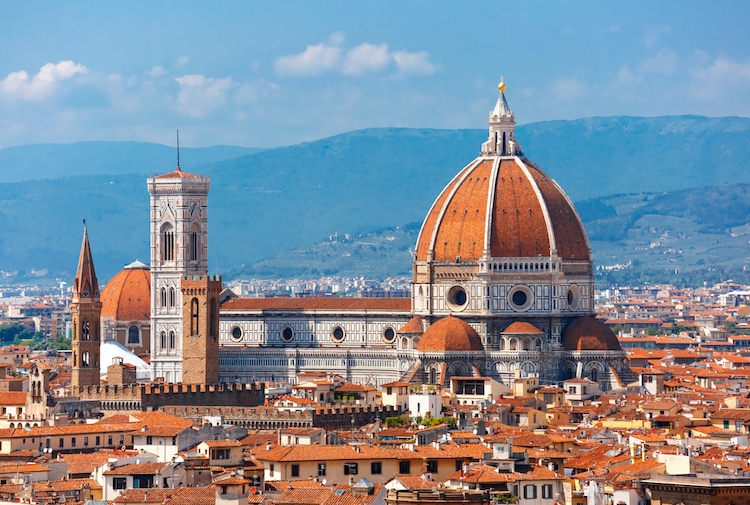
Cattedrale di Santa Maria del Fiore (“Cathedral of Saint Mary of the Flower”) in Florence (Photo: Stock Photos from Kavalenkava/Shutterstock)
Symbolism
The sculpture portrays David, a biblical figure. In a particularly well-known narrative (1 Samuel 17), David battles Goliath, a colossal Philistine. Against all odds, an unarmored David knocks down his enemy using a sling and then beheads him with his own sword. Given David’s esteemed reputation, it is not surprising that the Office of Works would choose to feature the figure as a subject in their sculptural series of historic greats.
Additionally, as an independent city-state, the Republic of Florence was aware of the threats that surrounded them. Therefore, they viewed David as a perfect symbol of Florence, as he captured the unwavering courage, unexpected strength, and historic perseverance that they saw in themselves.
Artistic Significance
LIFELIKE ANATOMY
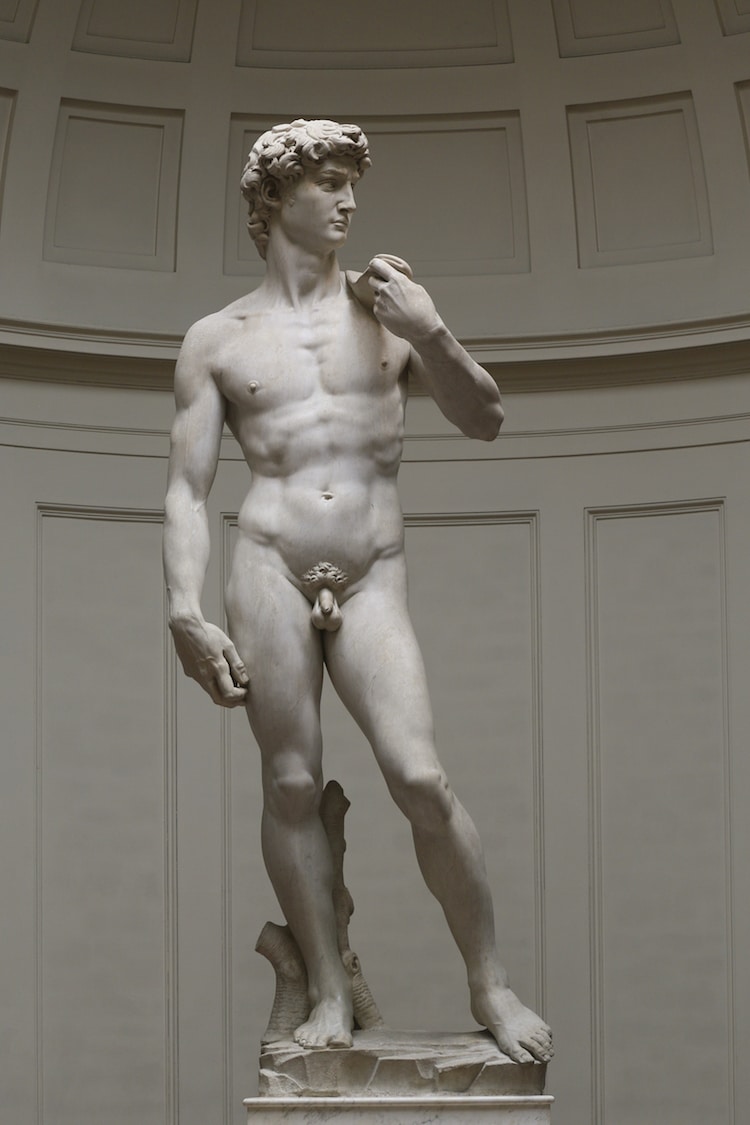
Michelangelo, “David,” 1501-1504 (Photo: Jörg Bittner Unna via Wikimedia Commons, CC BY-SA 3.0)
During the High Renaissance, Michelangelo created figurative works that focused on balance, harmony, and the ideal form. David showcases these artistic sensibilities through his lifelike, asymmetrical posture—known as contrapposto or “counterpose”—and his realistic and highly detailed anatomy.
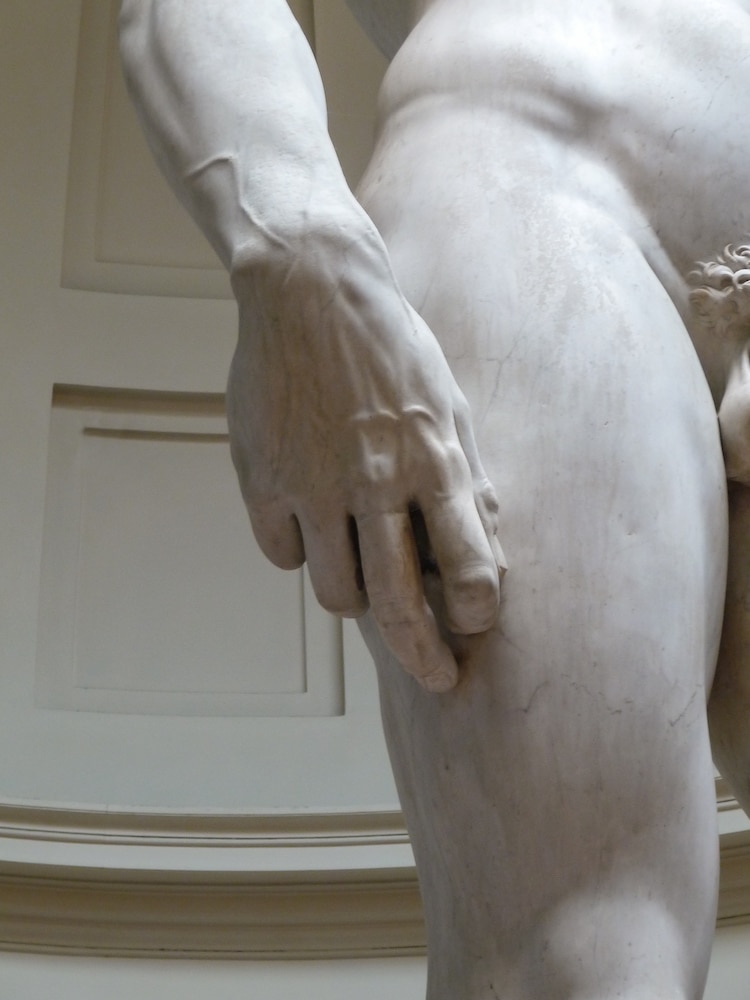
Detailed view of “David” (Photo: Jörg Bittner Unna via Wikimedia Commons, CC BY-SA 3.0)
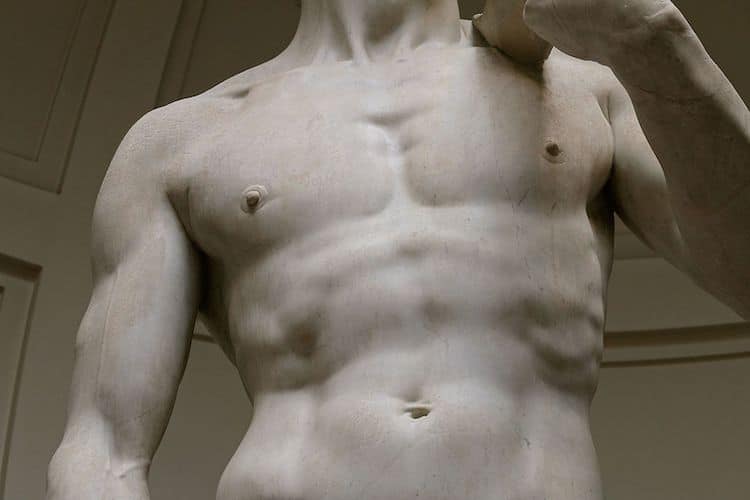
Detailed view of “David” (Photo: Jörg Bittner Unna via Wikimedia Commons [CC BY-SA 3.0])
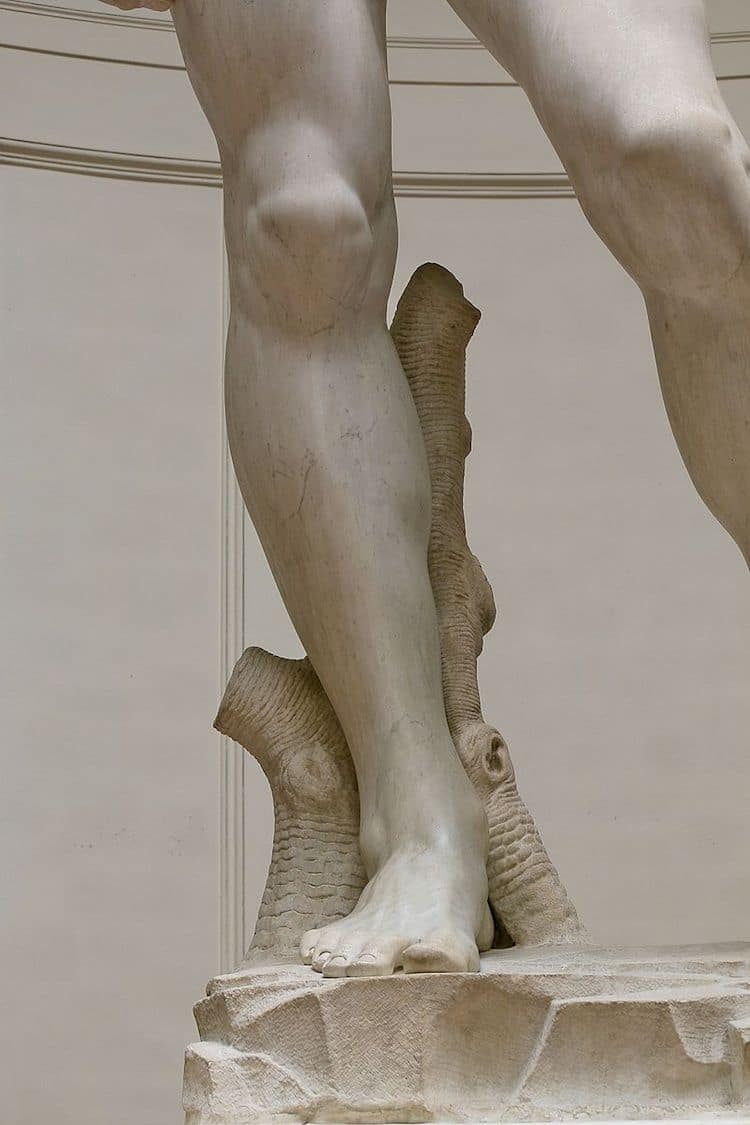
Detailed view of “David” (Photo: Jörg Bittner Unna via Wikimedia Commons, CC BY-SA 3.0)
UNCONVENTIONAL PORTRAYAL
In most depictions of David that have been painted and sculpted throughout history, artists opt to portray him as a young boy. They also commonly choose to capture the moment after he has slain Goliath. This approach is evident in well-known works by Early Renaissance artist Donatello as well as Baroque painter Caravaggio.
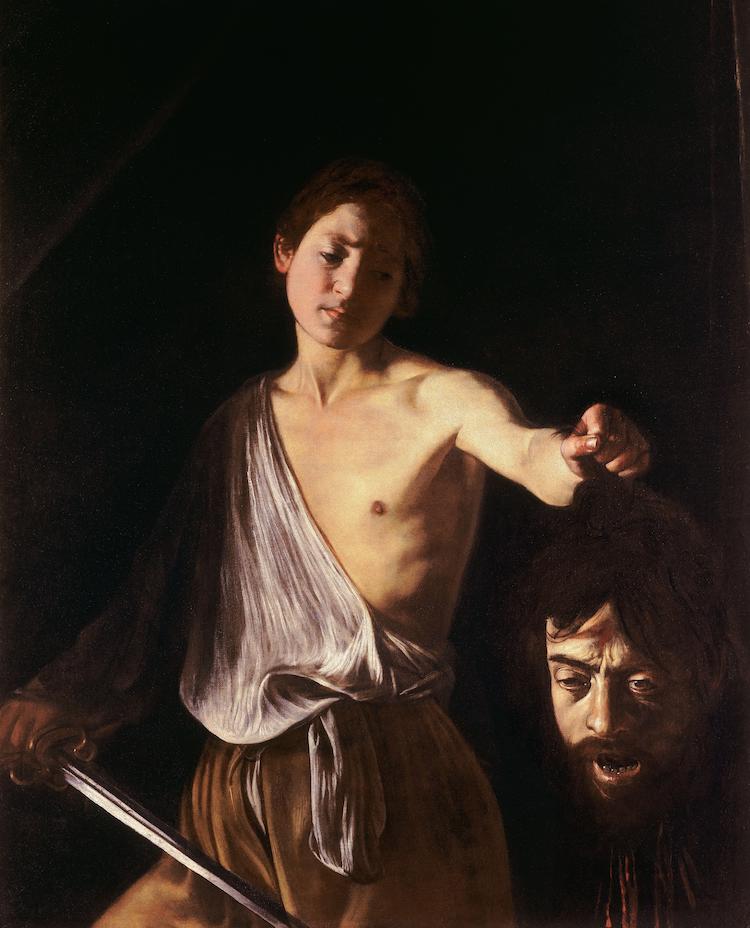
Caravaggio, “David with the Head of Goliath,” c. 1605-1610 (Photo: Galleria Borghese via Wikimedia Commons, Public domain)
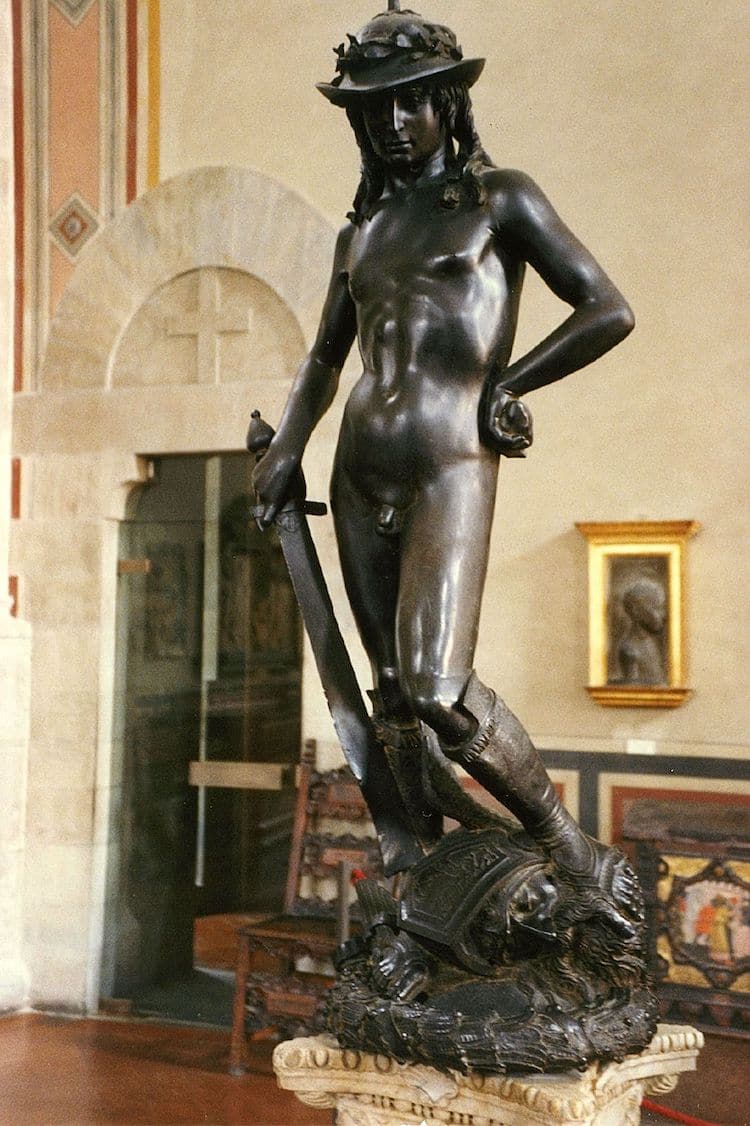
Donatello, “David,” bronze sculpture, c. 1440 (Photo: Patrick A. Rodgers via Wikimedia Commons, CC BY-SA 2.0)
Michelangelo, however, curiously decided to depict David as a young man. He also creatively chose to show him in the minutes before his battle, with a sling in his hand and a look of determination on his face.
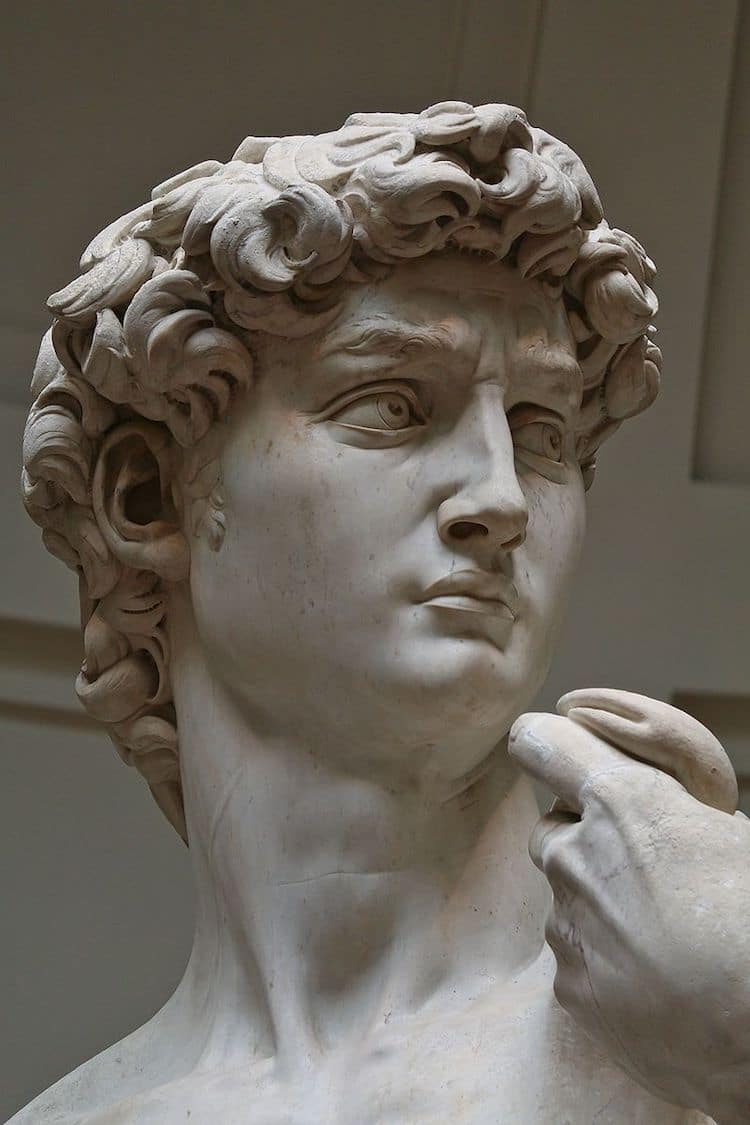
Close-up of Michelangelo’s “David” (Photo: Jörg Bittner Unna via Wikimedia Commons, CC BY-SA 3.0)
SCALE
At 17-feet tall, David is clearly a larger-than-life portrayal. Given the relatively realistic scales of Michelangelo’s other sculptures, like his Dying Slave (7 feet tall) and his Pietà (5.7 feet), why is David so tall?
Likely, the sculpture’s stature is a result of its intended location: the roof of the cathedral. In order for the public to fully appreciate the sky-high figure, it would need to be large enough to view from the Piazza del Duomo, hence David‘s colossal size.
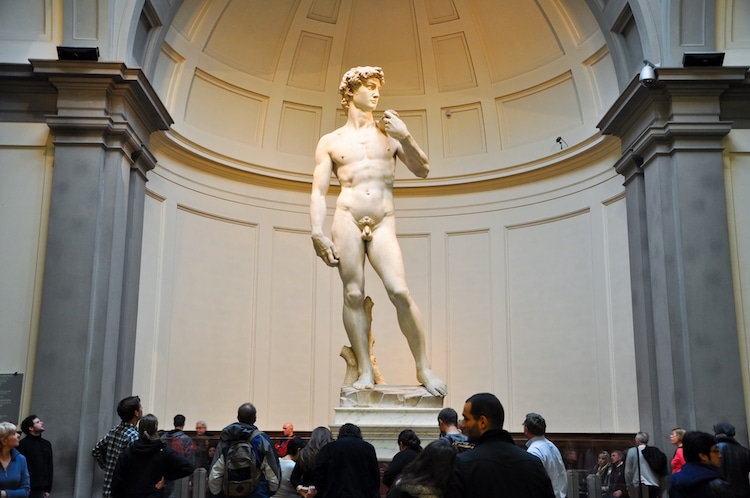
“David” on display in Galleria dell’Accademia in Florence, Italy (Photo: Stock Photos from lornet/Shutterstock)
Replicas
Full-sized reproductions of the iconic sculpture can be found all over the world—even close to home in Florence. To mark the statue’s original location, a marble copy has been placed in the Piazza della Signoria, a bustling square near the world-renowned Uffizi Gallery. A bronze cast can also be found in the Piazzale Michelangelo, a plaza with a panoramic view of the city’s skyline and the surrounding Tuscan landscape.
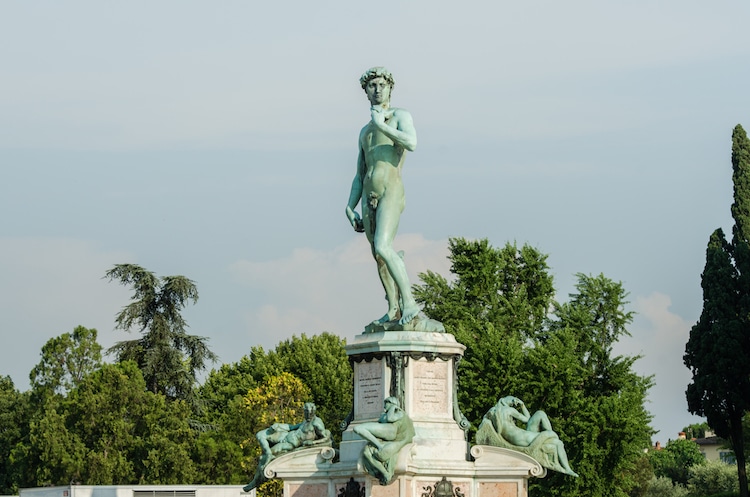
Bronze replica in the Piazzale Michelangelo in Florence, Italy (Photo: Stock Photos from Elnur/Shutterstock)
In addition to Florentine locations, copies of the David are on-view in various museums and public spaces across the globe. Notable replicas include a plaster copy in London’s Victoria & Albert Museum, a bronze casting in Buffalo, New York’s Delaware Park, and a marble copy on the Avenue du Prado in Marseille, France.
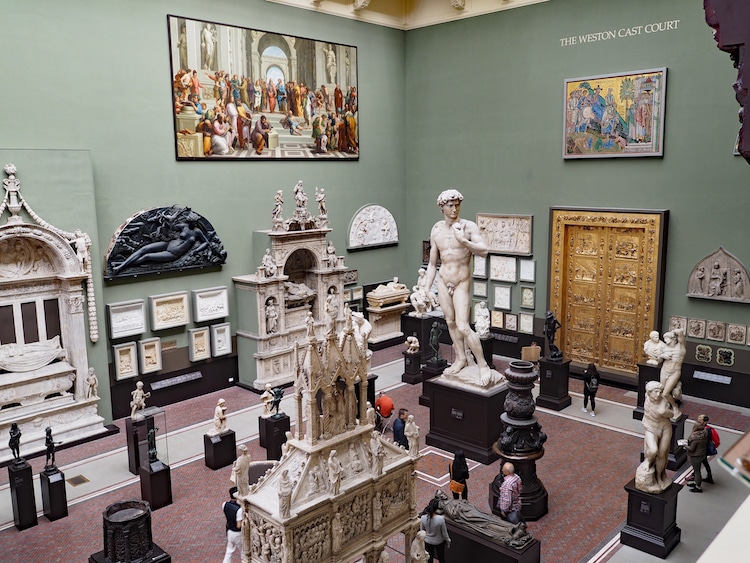
Plaster replica at the Victoria & Albert Museum in London, UK (Photo: Stock Photos from Spiroview Inc/Shutterstock)
While no reproduction could possibly replace the original, these castings serve two important purposes: to educate the public (some replicas are even used as tactile teaching aids for scholars studying the statue), and to spread Michelangelo’s profound legacy, both in Italy and beyond.
Related Post
A shocking documentary proves that mermaids do exist
SHOCKING Revelation: Thuya, Mother of Queen Tiye, Was the Grandmother of Akhenaten and Tutankhamun—What Ancient Egyptian Secrets Did She Leave Behind?
Breaking News: Astonishing Discoveries at Karahan Tepe Confirm an Extraterrestrial Civilization is Hiding on Earth, and NO ONE Knows!
Breaking News: Researchers FINALLY Discover U.S. Navy Flight 19 After 75 Years Lost in the Bermuda Triangle!
NASA’s Secret Investigation: Uncovering the Astonishing Mystery of the UFO Crash on the Mountain!
Explosive UFO Docs LEAKED: Startling Proof That Aliens Ruled Ancient Egypt!